Dutch Brazil
Dutch Brazil, also known as New Holland, was the northern portion of the Portuguese colony of Brazil, ruled by the Dutch during the Dutch colonization of the Americas between 1630 and 1654.[1] The main cities of the Dutch colony of New Holland were the capital Mauritsstad (today Recife), Frederikstadt (João Pessoa), Nieuw Amsterdam (Natal), Saint Louis (São Luís), São Cristóvão, Fort Schoonenborch (Fortaleza), Sirinhaém, and Olinda.
Dutch Brazil / New Holland Nederlands-Brazilië or Nieuw-Holland | |||||||||
|---|---|---|---|---|---|---|---|---|---|
| 1630–1654 | |||||||||
 Flag
| |||||||||
 Dutch Brazil 1630-1654 | |||||||||
| Status | Dutch colony | ||||||||
| Capital | Mauritsstad (Recife) | ||||||||
| Common languages | Dutch Indigenous languages | ||||||||
| Religion | Dutch Reformed | ||||||||
| Government | Colony | ||||||||
| Governor | |||||||||
• 1637–1643 | John Maurice, Prince of Nassau-Siegen | ||||||||
• 1643–1654 | Dutch West India Company | ||||||||
| History | |||||||||
• Start | 16 February 1630 | ||||||||
• Arrival of Maurice of Nassau | 23 January 1637 | ||||||||
| 19 April 1648 | |||||||||
| 19 February 1649 | |||||||||
| 28 January 1654 | |||||||||
| Currency | Braziliaanse Guldens (Brazilian Guilders) | ||||||||
| |||||||||
| Today part of | |||||||||
From 1630 onward, the Dutch Republic conquered almost half of Brazil's settled European area at the time, with its capital in Recife. The Dutch West India Company (GWC) set up its headquarters in Recife. The governor, Johan Maurits, invited artists and scientists to the colony to help promote Brazil and increase immigration. However, the tide turned against the Dutch when the Portuguese won a significant victory at the Second Battle of Guararapes in 1649. On 26 January 1654, the Dutch surrendered and signed the capitulation, but only as a provisional pact. By May 1654, the Dutch demanded that the Dutch Republic was to be given New Holland back. On 6 August 1661, New Holland was formally ceded to Portugal through the Treaty of The Hague.
While of only transitional importance for the Dutch, this period was of considerable importance in the historical memory in Brazil. It did not have lasting changes on the social and institutional development of Portuguese Brazil.[2] Local Portuguese settlers had to oppose the Dutch largely by their own resources, including mobilizing black and indigenous allies, and made use of their knowledge of local conditions. This struggle is counted in Brazilian historical memory as laying the seeds of Brazilian nationhood. This period also precipitated a decline in Brazil's sugar industry, since conflict between the Dutch and Portuguese disrupted Brazilian sugar production, amidst rising competition from British, French, and Dutch planters in the Caribbean.[3]
Early Iberian-Dutch relations
The Habsburg family had ruled the Low Countries from 1482; the area became part of the Spanish Empire under the Spanish Habsburgs in 1556; however, in 1568 the Eighty Years' War (1568-1648) broke out, and the Dutch established the Republic of the Seven United Netherlands in 1581. As part of the war, Dutch raiders attacked Spanish lands, colonies, and ships. In 1594 Philip II, who was king both of Spain and (from 1580) of Portugal, gave permission for Dutch ships bound for Brazil to sail together once a year in a fleet of twenty ships.[4] In 1609 the Habsburgs and the Dutch Republic signed a Twelve Years' Truce, during which the Dutch Republic was allowed to trade with Portuguese settlements in Brazil (Portugal was in a dynastic union with Habsburg Spain from 1580 to 1640). Portugal's small geographic size and small population meant that it needed "foreign participation in the colonization and commerce of its empire", and the Dutch had played such a role, which was mutually beneficial.[5] As part of the truce of 1609-1621 the Dutch also agreed to delay the establishment of a West India Company, a counterpart to the already existing Dutch East India Company.
By the end of the truce, the Dutch had vastly expanded their trade networks and gained over half of the carrying trade between Brazil and Europe. (The northern Netherlands operated 29 sugar refineries by 1622, versus 3 in 1595.[6]) In 1621, the twelve-year peace treaty expired and the United Netherlands immediately chartered a Dutch West India Company.[7] The Dutch–Portuguese War, which had started in 1602, resumed, and through the new company the Dutch now started to interfere with the Spanish and Portuguese colonies in America.
Unsuccessful 1624 invasion
As part of the Groot Desseyn plan, Admiral Jacob Willekens in December 1623 led a West Indische Compagnie (WIC) force to Salvador, which was then the capital of Brazil and the center of a captaincy famous for its sugarcane.[8] The expedition consisted of 26 ships and 3,300 men.[9] They arrived there on May 8, 1624, whereupon the Portuguese Governor Diogo Tristão de Mendonça Furtado surrendered.[10]
However, on April 30, 1625, the Portuguese recaptured the city with the help of a combined Spanish and Portuguese force consisting of 52 ships and 12,500 men.[11] The city would then play a critical role as a base of the Portuguese struggle against the Dutch for the control of Brazil.
In 1628, the seizure of a Spanish silver convoy by Piet Heyn in Matanzas Bay provided the Dutch WIC the funds for another attempt to conquer Brazil at Pernambuco.[11][12]
Northeastern Brazil in the Golden Age of Dutch Rule
Establishment of Dutch Brazil
Successful 1630 invasion
In the summer of 1629, the Dutch coveted a newfound interest in obtaining the Brazilian state (captaincy) of Pernambuco, the largest and richest sugar-producing area in the world.[13][14] The Dutch fleet of 65 ships was led by Hendrick Corneliszoon Loncq; the WIC gained control of Olinda by February 16, 1630, and Recife (the capital of Pernambuco) and António Vaz by March 3.[14]
Consolidation of Dutch control
Matias de Albuquerque, the Portuguese governor, led a strong Portuguese resistance which hindered the Dutch from developing their forts on the lands which they had captured. By 1631, the Dutch left Olinda and tried to gain control of the Fort of Cabedello on Paraíba, the Rio Grande, Rio Formoso, and Cabo de Santo Agostinho. These attempts were also unsuccessful, however.
Still in control of António Vaz and Recife, the Dutch later gained a foothold at Cabo de Santo Agostinho. By 1634 the Dutch controlled the coastline from the Rio Grande do Norte to Pernambuco's Cabo de Santo Agostinho. They still maintained control of the seas as well. By 1635 many Portuguese settlers were choosing Dutch-occupied land over Portuguese-controlled land. The Dutch offered freedom of worship and security of property. In 1635 the Dutch conquered three strongholds of the Portuguese: the towns of Porto Calvo, Arraial do Bom Jesus, and Fort Nazaré on Cabo de Santo Agostinho. These strongholds gave the Dutch increased sugar lands which led to an increase in profit.
Dutch Brazil under Johan Maurits van Nassau-Siegen
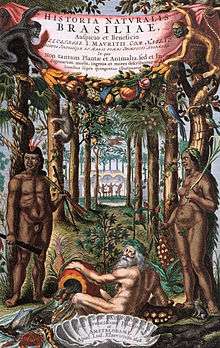
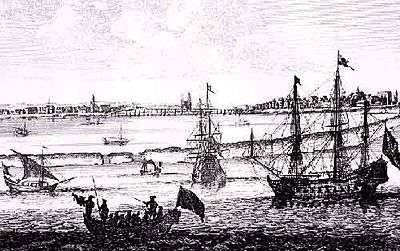
In 1637, the WIC gave control of its Brazilian conquests, now called "Nieuw Holland," to Johan Maurits van Nassau-Siegen (John Maurice of Nassau), the great-nephew of William the Silent. Within the year, Johan Maurits captured the Brazilian province of Ceara and sent an expedition to capture the West African trading post of Elmina Castle, which became the capital of the Dutch Gold Coast. In 1641 the Dutch captured the province of Maranhao, meaning that Dutch control now extended across the entire coastline between the Amazon and Sao Francisco Rivers.[16]


Governance under Maurits
Maurits claimed to have always loved Brazil due to its beauty and its people, and under his rule, the colony thrived.[18] His patronage of Dutch Golden Age painters, such as Albert Eckhout and Frans Post, to depict Brazil's richness resulted in works showing different races, landscapes, and still lifes. He also invited naturalists Georg Marcgraf and Willem Piso to Brazil. They collected and published a vast amount of information on Brazil's natural history, resulting in the 1648 publication of Historia Naturalis Brasiliae, the first organized European compendium of knowledge on the Americas, which was hugely influential in learned European scientific circles for well over a century.[19]
He organized a form of representative local government by creating municipal councils and rural councils with both Dutch and Brazilian Portuguese members to represent the population.[20]
Through these he began to modernize the country with streets, bridges, and roads in Recife. On the island of António Vaz, he founded the town of Mauritsstad (also known as Mauricia) where he created an astronomic observatory and a meteorological station, which were the first created by Europeans in the Americas.
Under Maurits, protection for Brazilian Jews who had been formerly ostracized was increased. He allowed former Jews who had been forced to convert to Christianity to return to their former faith. Non-Catholic Christians, such as Calvinists, were also allowed to practice their faith as part of religious toleration.[18] Furthermore, the Catholic majority in Dutch Brazil was allowed to practice their faith freely, at a time in history in which there was extreme religious conflicts such as the Thirty Years' War between Catholics and Protestants. This was formed into the new law of Dutch Brazil in the peace accord signed after the conquest of the captaincy of Paraiba. The monastic orders of the Franciscans, Carmelites, and Benedictines were quite prominent in the former Portuguese colony. They were also allowed to retain all of their friaries and monasteries and allowed to practice and preach Catholicism among the population.[20]
| Main Dutch Brazilian Cities | |
|---|---|
| Dutch colonial Name | Today |
| Mauritsstad | Recife |
| Frederikstadt | João Pessoa |
| Nieuw-Amsterdam | Natal |
Population of Dutch Brazil
Although there were Dutch immigrants to Brazil, the majority of the population was Portuguese and Brazilian-born Portuguese, African slaves, and Amerindians, with Dutch rule an overlay on pre-existing social groups.[18] The colony of Dutch Brazil had a difficult time of attracting Dutch colonists to immigrate and colonize in Brazil, as the main attraction of the colony was the extreme riches one could reap from starting a sugar plantation, as it was one of the few major market exporters of sugar to Europe at the time. This would also most likely entail the buying of African slaves, and as such only rich men could afford to start a plantation. There was also very significant risk with border contention and skirmish with the Portuguese from the parts of Brazil still under their control and the nonexistent loyalty of the local Portuguese Brazilians to the Dutch colony. Most of the Dutchmen employed in the Dutch West India Company went back to the Netherlands after they were relieved of duty and did not stay to settle the colony. As such, the Dutch were a ruling minority with a Portuguese and Brazilian-born Portuguese population.[20] The Dutch settlers were divided into two separate groups, the first of which was known as “Dienaren” (servants). Dienaren were soldiers, bureaucrats, and Calvinist ministers employed by the WIC.
Vrijburghers (freemen) – or Vrijluiden – were the second group of Dutch settlers who did not fit into the category of Dienaaren. The Vrijburghers were mostly ex-soldiers formerly employed by the WIC but who then began to settle down as farmers or engenho lords. Others who didn't fit the Vrijburgher or Dienaren categories included Dutch who left the Netherlands to find a new life in Nieuw Holland as traders. This group was the most economically important in Nieuw Holland since most trade was under their control.
The end of Dutch Brazil
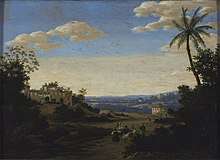
Departure of Maurits
In 1640, John, 8th Duke of Braganza declared Portuguese independence from Spain, ending the six decade-long Iberian Union. As a result, the threat of further Spanish intervention against Dutch Brazil declined, since Brazil was originally and had remained a Portuguese colony. In 1641-1642 the new Portuguese regime concluded a truce with the Dutch, temporarily ending hostilities, but the Dutch remained in Brazil. In 1643 Johan Maurits equipped the expedition of Hendrik Brouwer that unsuccessfully attempted to establish an outpost in southern Chile.[21][22] In 1644, the WIC recalled Johan Maurits to Europe in an attempt to cut military expenditures, following the cession of hostilities.
Demise of Dutch West India Company in Brazil
A year after Maurits was summoned back by the WIC board, the WIC faced a major uprising of Portuguese planters in June 1645. The Portuguese planters around Pernambuco had never fully accepted Dutch rule, and had also resented the high interest rates charged by Dutch moneylenders for loans to rebuild their plantations following the initial Dutch conquest. In August, the planters revolted and prevailed over Dutch forces in a minor battle fought outside Recife, effectively ending Dutch control over the colony. That year, the Portuguese gained Várzea, Sirinhaém, Pontal de Nazaré, the Fort of Porto Calvo, and Fort Maurits. By 1646, the WIC only controlled four toeholds along the Brazilian coast, chief among them being Recife.[18]
In the spring of 1646, the Dutch sent a relief expedition to Recife consisting of 20 ships with 2000 men, temporarily forestalling the fall of the city. Back in Europe, the collapse of Dutch Brazil accelerated Dutch efforts to end its longstanding conflict with Spain, the Eighty Years' War. In August 1647, representatives from the Dutch province of Zeeland (the final holdout against peace with Spain) acquiesced to the Peace of Munster ending the war with Spain. In return, Zeeland obtained promises from the other Dutch provinces to support a second, larger relief expedition to reconquer Brazil. The expedition, consisting of 41 ships with 6000 men, set sail on December 26, 1647.[23]
In Brazil, the Dutch had already abandoned Itamaracá on December 13, 1647. The new expeditionary force arrived late at Recife, with many of its soldiers either dead or mutinous from lack of pay. In April 1648, the Portuguese routed the expeditionary force at the First Battle of Guararapes, fought outside Recife. The Portuguese had sent an armada of 84 ships, including 18 warships to recapture Recife.[24] In February 1649, the Portuguese again routed the Dutch at the Second Battle of Guararapes.[25]
Recapture of Recife
The Reconquest of Recife was a military engagement between the Portuguese forces under Francisco Barreto de Meneses and the Dutch forces of Captain Walter Van Loo.[27] After the Dutch defeats at Guararapes, their surviving men, as well as other garrisons of New Holland, joined in the area of Recife in order to make a last stand. However, after fierce fighting, the Portuguese victoriously entered the city and the remaining Dutch were ousted from Brazil.
The Dutch finally lost control of Recife on January 28, 1654, leaving to the Portuguese their colony of Brazil and putting an end to Nieuw Netherlands.[28]
Role of the Amerindians and Africans
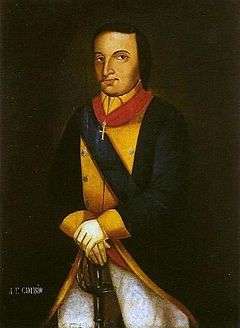
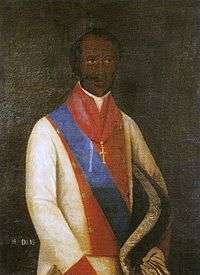
Although the historical focus is usually on the European rivals in the conflict, the Brazilian indigenous population was drawn into the conflict as allies on both sides. Most sided with Dutch, but there were some notable exceptions. One was a Potiguara chieftain who came to be known as Dom Antônio Filipe Camarão, who was rewarded for his loyalty to the Portuguese by being made a knighthood in the Order of Christ.[29] In the aftermath of the conflict when the Dutch were expelled, there were reprisals against their Brazilian Amerindian allies.[30]
Both the Dutch and the Portuguese used African slaves in the conflict, sometimes with the promise of freedom for fighting. On the Portuguese side, one name comes down in history, Henrique Dias, who was awarded noble status by the monarch, but not the knighthood in the Order of Christ as promised.[31]
Aftermath
In the aftermath of the Dutch occupation, Portuguese settled scores with Amerindians who had supported the Dutch. There were tensions between Portuguese who had fled the area under occupation and those who had lived under Dutch occupation. The returnees attempted to litigate so as to regain the properties they had abandoned, which in this sugar-producing area included sugar mills and other buildings, as well as cane fields. The litigation dragged on for years.[32]
The conflict in Brazil's northeast had severe economic consequences. Both sides had practiced a scorched earth policy that disrupted sugar production,[3] and the war had diverted Portuguese funds from being invested in the colonial economy. After the war, Portuguese authorities were forced to spend their tax revenues on rebuilding Recife. The sugar industry in Pernambuco never fully recovered from the Dutch occupation, being surpassed by sugar production in Bahia.[33]
Meanwhile, the British, French, and Dutch Caribbean had become a major competitor to Brazilian sugar due to rising sugar prices in the 1630s and 1640s. After the WIC evacuated Pernambuco, the Dutch brought their expertise and capital to the Caribbean instead. In the 1630s, Brazil provided 80% of the sugar sold in London, while it only provided 10% by 1690.[34] The Portuguese colony of Brazil did not recover economically until the discovery of gold in southern Brazil during the 18th century.[35]
The Dutch period in Brazil was "a historical parenthesis with few lasting traces" in the social sphere.[36] That said, Dutch artistic production in Brazil, particularly by Albert Eckhout and Frans Post left an important visual record of Brazilian people and places in the early seventeenth century.
Peace treaty
Seven years after the surrender of Recife, a peace treaty was organized between the Dutch Republic and Portugal. The Treaty of The Hague (1661) was signed on August 6, 1661,[37] and it demanded that the Portuguese would pay 4 million réis over the span of 16 years in order to help the Dutch recover from the loss of Brazil.
See also
Part of a series on the |
|---|
| History of Brazil |
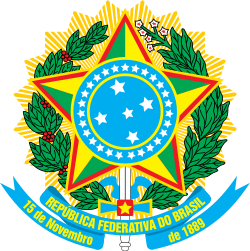 |
|
|
|
|
|
|
|
|
|
- Colonial Brazil
- Dutch West India Company
- Dutch Brazilian
- 17th century Dutch Brazil:
- Recife and Pernambuco:
- Others:
References
- The term "New Holland" should not be confused with the later term for present-day Western Australia.
- James Lockhart and Stuart B. Schwartz, Early Latin America, New York: Cambridge University Press 1983, p. 251.
- Lockhart and Schwartz, Early Latin America, p. 252.
- Acta Historiae Neerlandicae IX By R. Baetens, H. Balthazar, etc.
- James Lockhart and Stuart B. Schwartz, Early Latin America. New York: Cambridge University Press 1983, p. 250.
- Parker 1976, p. 64.
- Catherine Lugar, "Dutch West India Company" in Encyclopedia of Latin American History and Culture, New York: Charles Scribner's Sons 1996, vol. 2, p. 421.
- Lockhart and Schwartz, Early Latin America, p. 2150.
- Francis A. Dutra, "Dutch in Colonial Brazil" in Encyclopedia of Latin American History and Culture, New York: Charles Scribner's Sons 1996, vol. 2, p. 415.
- Facsimile of manuscript regarding the ending of hostilities:Tractaet van Bestand ende ophoudinge van alle acten van vyandtschap als oock van traffijq commercien ende secours ghemaecht ghearresteert ende beslooten in s'Graven-Hage den twaelf den Junij 1641 ...;
- Dutra, "Dutch in Colonial Brazil" p. 415.
- Lugar, "Dutch West India Company", p. 421.
- "The Brazil Reader: History, Culture, Politics". Google Books. p. 121. Retrieved 21 September 2016.
- "Recife—A City Made by Sugar". Awake!. Retrieved 21 September 2016.
- "Maurício de Nassau, o brasileiro Mariana Lacerda". Archived from the original on 2014-12-23. Retrieved 2014-12-12.
- Parker 1976, p. 70-71.
- Bloom, Hebert Ivan. The Economic activities of the Jews in Amsterdam in the seventeenth and eighteenth centuries.
- Lockhart and Schwartz, Early Latin America, p. 251.
- Neil Safier, "Beyond Brazilian Nature: The Editorial Itineraries of Marcgraf and Piso's Historia Naturalis Braziliae in Michiel Van Grosen, The Legacy of Dutch Brazil. New York: Cambridge University Press 2014, pp. 168-186.
- Schwartz, Stuart B. Early Brazil: A Documentary Collection to 1700. New York, NY: Cambridge University Press, 2010.
- Robbert Kock The Dutch in Chili Archived March 3, 2016, at the Wayback Machine at coloniavoyage.com
- Kris E. Lane Pillaging the Empire: Piracy in the Americas, 1500–1750, 1998, pages 88-92
- Parker 1976, p. 71-72.
- Dutra, "Dutch in Colonial Brazil", p. 418.
- Parker 1976, p. 72.
- Paula Lourenço p.78
- Lourenço, Paula.Battles of Portuguese History - Defence of the Overseas. - Volume X. (2006), p. 78
- Facsimile of manuscript regarding the surrender of Dutch Brazil:Cort, Bondigh ende Waerachtigh Verhael Wan't schandelyck over-geven ende verlaten vande voorname Conquesten van Brasil...;
- Dutra, "Dutch in Colonial Brazil", p. 415.
- Dutra, "Dutch in Colonial Brazil, p. 419.
- Dutra, "Dutch in Brazil, pp. 415-16.
- Dutra, "Dutch in Colonial Brazil", p. 419.
- Schwartz, Stuart (2004). Tropical Babylons. The University of North Carolina Press. p. 170. ISBN 0-8078-2875-0.
- Schwartz, Tropical Babylons, p. 170.
- Lockhart and Schwartz, Early Latin America, pp. 251-2.
- Lockhart and Schwartz, Early Latin America, p. 251
- Facsimile of the treaty:Articulen van vrede en Confoederarie, Gheslooten Tusschen den Doorluchtighsten Comingh van Portugael ter eenre, ende de Hoogh Mogende Heeren Staten General ...;
Further reading
- Barlaeus, The History of Brazil Under the Governorship of Count Johan Maurits of Nassau, 1636-1644. Gainesville: University of Florida Press 2011.
- Boxer, C.R., The Dutch in Brazil, 1624–1654, The Clarendon press, Oxford, 1957. ISBN 0-208-01338-5
- Boogaart, Ernst Van den, et al. Johan Maurits van Nassau-Siegen, 1604-1679: A Humanitst Prince in Europe and Brazil. The Hague: Johan Maurits van Nassau Stichting 1979.
- Dutra, Francis A. "Dutch in Colonial Brazil" in Encyclopedia of Latin American History and Culture, New York: Charles Scribner's Sons 1996, vol. 2, pp. 414–420.
- Feitler, Bruno. "Jews and New Christians in Dutch Brazil, 1630-1654," in Richard L. Kagan and Philip D. Morgan, eds. Atlantic Diasporas. Jews, conversos, and Crypto-Jews in the Age of Mercantilism, 1500-1800. Baltimore: Johns Hopkins University Press 2009, 123-51.
- Groesen, Michiel van. "Lessons Learned: The Second Dutch Conquest of Brazil and the Memory of the First," Colonial Latin American Review 20-2 (2011) 167-93.
- Groesen, Michiel van, Amsterdam's Atlantic: Print Culture and the Making of Dutch Brazil, University of Pennsylvania Press, Philadelphia, 2017. ISBN 978-0-8122-4866-1
- Groesen, Michiel van (ed.), The Legacy of Dutch Brazil, Cambridge University Press, New York, 2014. ISBN 978-1-107-06117-0
- Israel, Jonathan I. "Dutch Sephardi Jewry, Millenarian Politics, and the Struggle for Brazil (1645-54)." In Diasporaporas Winthin a Disapora. Jonathan I. Israel, ed. Leiden: Brill 2002.
- Israel, Jonathan, Stuart B. Schwartz, and Michiel van Groesen. The expansion of tolerance: religion in Dutch Brazil (1624-1654). Amsterdam University Press, 2007.
- Joppien, Rüdger. "The Dutch Vision of Brazil: Johan Maurits and His Artists," in Johan Maurits van Nassau-Siegen, 1604-1679: A Humanist Prince in Europe and Brazil, ed. Ernst van den Boogaart, et al. 297-376. The Hague: Johan Maurits van Nassau Stichting, 1979.
- Klooster, Wim. “The Geopolitical Impact of Dutch Brazil on the Western Hemisphere.” In The Legacy of Dutch Brazil, edited by Michiel van Groesen, 25-40. Cambridge: Cambridge University Press, 2015.
- Novinsky, Anita. “A Historical Bias: The New Christian Collaboration with the Dutch Invaders of Brazil (17th Century).” In Proceedings of the 5th World Congress of Jewish Studies, II.141-154. Jerusalem: World Union of Jewish Studies, 1972.
- Parker, Geoffrey (1976). "Why Did the Dutch Revolt Last Eighty Years?". Transactions of the Royal Historical Society. 26.CS1 maint: ref=harv (link)
- Schmidt, Benjamin, Innocence Abroad: The Dutch Imagination and the New World, 1570-1670, Cambridge: University Press, 2001. ISBN 978-0-521-80408-0
- Wiznitzer, Arnold. Jews in Colonial Brazil. New York: Columbia University Press, 1960.
External links
| Wikimedia Commons has media related to Dutch Brazil. |
- Dutch West Indies 1630–1975 on YouTube
- Facsimiles of 20 manuscripts from the Dutch West India Company Relating about the events in Brazil in the 17th century (PT & NL)
- Guararapes Birth of the Brazilian Nationality Brazilian Armed Forces site
- The Dutch in Brazil
- History of Dutch Brazil and Guiana
- The New Holland Foundation
- World Statesmen – Brazil
- History of Portuguese America, in Portuguese, by Sebastião da Rocha Pita
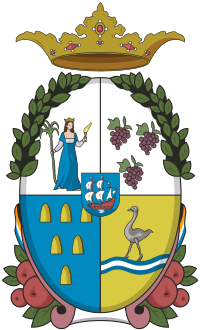
.jpg)
.jpg)